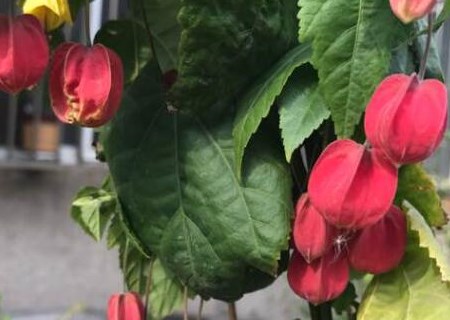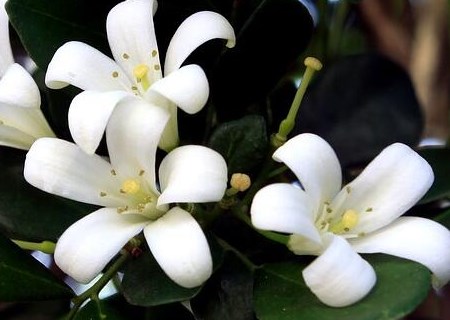What are the breeding methods and matters needing attention for the beautiful vine bluebells? When is the cuttage (striping)? What if it doesn't blossom?
Vine bluebells, also known as hanging bluebells, like warm, humid and sunny environment, but also resistant to semi-shade, cold and drought, suitable for loose, breathable, humus-rich soil. So do you know what breeding methods and precautions are there for bluebells? When is the cuttage (striping)? What if it doesn't blossom?

I. Culture methods and matters needing attention of bluebells
There are only two common ways, namely, striping and cutting. Friends who have planted this plant may know that cuttings are much more common than striping, and we generally use the second way. So, here is the main introduction to it. As for the crimping, it is not common, and on the other hand, the crimping of this plant is just like that of other plants, so it is not necessary to introduce it in detail.
Carry out the specific operation of cutting
Cut off about ten centimeters of the branches of the plant (choose the one at the top) for use, and be careful to cut it from the bottom of the node. Then, take off some of the leaves under the branch.
The selection of the medium is mainly concerned with ventilation and water permeability, and the same amount of peat and sand in the river can be selected for mixed treatment.
Insert the branches that have been prepared in the first step into the medium, about 40% to 50, and then put them together in a place where you can see the warm sun.
After waiting for a period of time, about three weeks or so, it will take root. In the meantime, if the temperature is very low, you can bag the plant to ensure the right temperature for its growth.
Matters needing attention
To get enough light, it takes at least three to four hours a day.
In addition, considering that plants like a more humid environment, so watering should also pay special attention. Generally speaking, the soil should be rehydrated in time when it begins to dry about one centimeter from the surface, and it should not be watered again. Of course, the soil should not be soaked in water.
The next factor, of course, is fertilization, and in order to ensure that the plant that has just been inserted into the soil gets adequate nourishment, it is best to apply a general fertilizer. If it's winter, it won't be necessary.
Second, what month cuttage (striping)
① ordinary striping. Suitable for branches, soft plants or trees with more flexible branches near the ground (Magnolia, Chimonanthus, etc.). The 1-2-year-old branches of the mother plant were bent to the four directions, cut below and pressed into the pit, fixed with hooks, compacted with soil, and the branches were slightly vertically exposed to the ground and tied with a holding object. (principle: the sieve tube in the scratched part of the striping part can not continue to transport nutrients, thus accumulating in the wound to gradually develop into roots. )
② horizontal striping. It is suitable for trees with long branches and easy to root (such as apple dwarf rootstock, rattan rose, etc.). Also known as continuous pressure, trenching pressure. Dig shallow trenches along the branches, cut the branches at appropriate intervals and fix them horizontally in the trenches, remove the buds growing down from the branches and fill the soil. After rooting and sprouting, the seedlings were cut off one by one at the internodes, and each seedling was accompanied by a section of matrix.
③ corrugated strips. A vine (such as grapes, etc.) suitable for long branches. The branches are bent up and down into waves, and the landing part is buried in the soil. after it takes root and protrudes the ground part to sprout and grow for a certain period of time, it is cut into new plants one by one.
④ earth embossing. It is suitable for trees with strong tillering or tufted roots (such as magnolia, pearl plum, yellow thorn rose, plum, pomegranate, etc.). The base of the root neck branch was cut and buried in the soil, and after taking root, it was cut into a new plant.
⑤ air strips. Created by China, also known as Chinese crimping or high pressure. Suitable for tall or not easy to bend plants, mostly used for valuable tree species (camellia, sweet-scented osmanthus, longan, litchi, pistachio, etc.). Select 1-3-year-old branches, peel 2-4 cm around, scrape off the cambium or longitudinally carve into a wound, wrap the cut with plastic sheeting, opposite bamboo tubes and earthen pots, tightly bind and fix it, fill it with moss or fertile soil, often water and moisturize, and cut off into new plants after rooting.
Plants that can be pressed: pomegranate, rose, Michelia, magnolia and so on.
What if the vine wind chimes do not blossom
1. Analysis of the reasons for non-flowering.
Temperature
The first thing to mention is, of course, the temperature. If the temperature is too low, the roots and leaves of the plant may not have a problem for a while, but the flowers will bear the brunt. A natural drop in temperature in winter or a high altitude where you live may make the temperature unsuitable for plants to blossom.
Lack of nourishment
The second reason is the lack of nourishment. It is included in this reason that the soil itself does not contain much nutrients or that it is forgotten when it should be fattened. If the nutrition can not keep up, even if the plant blossoms on time, the quality will certainly not be satisfactory.
Light
The third is lack of light, do not ignore this, plants can not survive without sunlight, let alone blossom.
Moisture content
The fourth is moisture, this is unlikely, it can be regarded as a kind of it.
2. Solution
If the altitude is high and the temperature is low or in winter, the plants must be moved indoors for maintenance. It is best to ensure that the temperature around the plants is not less than 15 degrees before the flowers can bloom normally.
At the beginning of planting, it is best to choose potted soil rich in nutrients. However, if the soil selection is uncontrollable, fertilizers are used to replenish nutrients and liquid fertilizers are applied every other month or so.
As for the third reason, just put it in a sunny place. Even if you are indoors in winter, you should take it out regularly to bask in.
The last one is water, generally keep the soil in the basin slightly wet, not too dry can not accumulate a lot of water, summer can also be properly sprayed with water.
Time: 2019-03-18 Click:
- Prev

What are the seed planting methods of perennial woody jasmine? Do you lose leaves in winter? What's the use?
Silver jasmine is a perennial woody plant with many capillary roots, branches and branches, long and slightly drooping, white flowers, fragrant flowers, long flowering period and continuous blooming. So what do you know about the methods of planting silver jasmine seeds? Do you lose leaves in winter? What's the use?
- Next

How to raise Dendrobium
How to raise Dendrobium
Related
- Fuxing push coffee new agricultural production and marketing class: lack of small-scale processing plants
- Jujube rice field leisure farm deep ploughing Yilan for five years to create a space for organic food and play
- Nongyu Farm-A trial of organic papaya for brave women with advanced technology
- Four points for attention in the prevention and control of diseases and insect pests of edible fungi
- How to add nutrient solution to Edible Fungi
- Is there any good way to control edible fungus mites?
- Open Inoculation Technology of Edible Fungi
- Is there any clever way to use fertilizer for edible fungus in winter?
- What agents are used to kill the pathogens of edible fungi in the mushroom shed?
- Rapid drying of Edible Fungi

